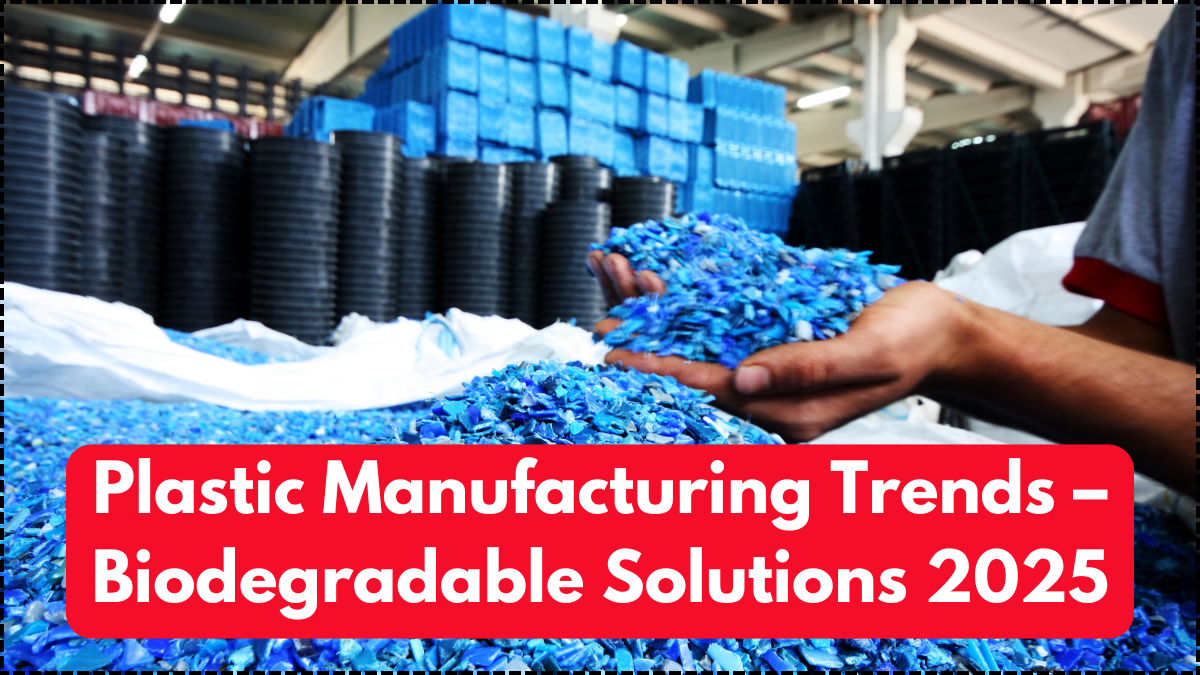The global plastics industry is changing rapidly, and Plastic Manufacturing Trends 2025 reveal a clear shift toward sustainability and innovation. Companies are rethinking production methods, materials, and waste management practices to align with stricter regulations and consumer demand for eco-friendly products. In 2025, the focus is not only on improving efficiency but also on reducing environmental impact.
One of the biggest shifts in the sector is the rise of biodegradable materials. Manufacturers are investing heavily in research and development to create plastics that break down faster and cause less harm to the planet. This change is shaping the future of packaging, consumer goods, and industrial products.

Why Biodegradable Solutions Are Taking the Lead
The Plastic Manufacturing Trends 2025 report highlights how environmental concerns are pushing innovation. With growing awareness of pollution and stricter global laws on single-use plastics, industries are now under pressure to adopt greener solutions.
The adoption of biodegradable materials is at the center of this transformation. From plant-based polymers to compostable packaging, these materials are offering viable alternatives to traditional plastics while maintaining strength and durability.
Key Trends Defining the Industry in 2025
The plastics sector is going through its biggest transformation in decades. Some of the most important Plastic Manufacturing Trends 2025 include:
-
Shift to biodegradable materials for packaging and consumer goods
-
Development of circular economy models with recycling at every stage
-
Use of AI and automation in production lines for precision and waste reduction
-
Government incentives and policies encouraging sustainable manufacturing
-
Increased demand for eco-friendly products from global brands
These factors are pushing companies to rethink how plastics are made, used, and disposed of.
Plastic Manufacturing – 2025 Snapshot
Here’s a table summarizing key areas where Plastic Manufacturing Trends 2025 are evolving, especially with the introduction of biodegradable materials.
| Sector | Trend Focus | Biodegradable Material Usage | Key Impact |
|---|---|---|---|
| Packaging | Compostable plastics | Widespread use in food packaging | Reduces landfill waste |
| Consumer Products | Plant-based polymers | Used in utensils, bags, and toys | Eco-friendly alternatives |
| Industrial Goods | Recyclable components | Biodegradable composites emerging | Supports circular economy |
| Agriculture | Bio-plastic films | Soil-friendly materials | Less soil contamination |
| Automotive | Sustainable interiors | Biodegradable trims and fabrics | Lighter, greener vehicles |
How the Industry and Consumers Benefit
The shift highlighted in Plastic Manufacturing Trends 2025 benefits both the environment and the economy. Manufacturers who invest in biodegradable materials are finding new markets and winning consumer trust. Governments are rewarding these efforts with subsidies and favorable policies, while consumers are supporting brands that prioritize sustainability.
The transition is not without challenges—costs are higher, and production methods need updating—but the long-term advantages outweigh the initial investment.
Conclusion
The Plastic Manufacturing Trends 2025 story is one of change, responsibility, and opportunity. By focusing on biodegradable materials and innovative production methods, the industry is moving away from harmful practices and building a more sustainable future. The next decade will likely see even more breakthroughs, making plastics smarter, greener, and safer for the planet.
FAQs
What are the key Plastic Manufacturing Trends 2025?
The major trends include biodegradable solutions, advanced recycling methods, and increased automation in production.
Why are biodegradable materials important in 2025?
They help reduce pollution by breaking down naturally, making them essential for eco-friendly plastic manufacturing.
Which sectors are adopting biodegradable materials the fastest?
Packaging and consumer goods are leading the way, with rapid adoption across Plastic Manufacturing Trends 2025.
Are biodegradable plastics more expensive to produce?
Yes, they can be costlier initially, but as production scales, prices are expected to drop, making them more accessible.
Will traditional plastics disappear completely?
Not yet—but Plastic Manufacturing Trends 2025 show a steady shift toward biodegradable and recyclable alternatives, reducing reliance on harmful plastics.
Click here to know more